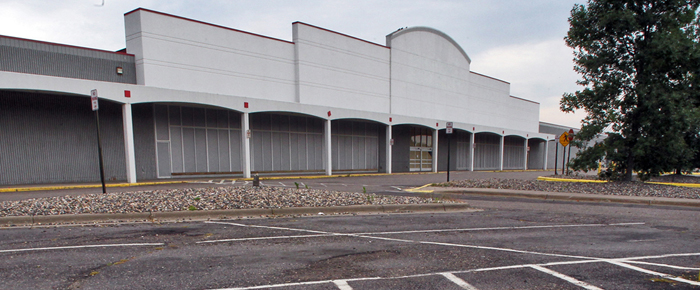
By Haddon Libby
The Limited is closing all of its stores, while Macy’s is cutting more than 100 of their 700 stores in a move followed by other retailers like Staples, Men’s Wearhouse/Jos A Bank, The Gap and Abercrombie & Fitch and Wal-Mart. Sears and K-Mart are likely to go bankrupt in the next 18 months while Sports Authority’s 460 stores have already failed.
Green Street Advisors estimate that 20% of all anchor tenants in shopping malls will go away over the next ten years and that 15% of malls across the United States could close. The real estate information firm CoStar states that these closures equates to 1 billion square feet of retail space.
Cushman and Wakefield report that mall traffic has declined by 50% over the last six years yet rents for retailers have continued to increase. One local example where rents nearly preclude a business’ success would be The River in Rancho Mirage. Given that the Coachella Valley is a seasonal market, rents that are over $4.50 per square foot are just not affordable. For comparison, the national average for retail space is $2.50 per square foot.
It should be no surprise that the intersection of high rent costs and lower foot traffic results in fewer stores…and fewer jobs.
As an aside, the highest prices for retail rent in the world are on upper Fifth Avenue in New York City at nearly $300 per square foot per month! Causeway Bay in Hong Kong is second at $227/square foot while Times Square is third at $200/square foot. Here in California, Rodeo Drive in Beverly Hills is the most expensive retail area at $56/square foot followed by Union Square in San Francisco at $54/square foot.
Because of a combination of lower prices and convenience, it is expected that shoppers will move half of their purchases to online channels over the next 12 years. The probable losers due of these changing consumer patterns are Kohl’s, JC Penney, Macy’s, Wal-Mart and Sears/Kmart.
Wal-Mart is attempting to combat this business challenge by evolving from the big box behemoth that it is to an e-commerce innovator. While Wal-Mart opens fewer stores, they will also be increasing their online presence. As part of this shift, Wal-Mart acquired Jet.com for $3 billion in cash and $300 million in stock in 2016 while shuttering nearly 270 of their 5,800 stores. With stores that are within twenty minutes of 96% of all Americans, Wal-Mart intends on using this physical presence in conjunction with a strong e-commerce strategy to take on Amazon. At present, Amazon has $80 billion in annual sales versus Wal-Mart’s $350 billion in sales. When looking at online sales only, Wal-Mart is far behind Amazon at approximately $9 billion.
To give you an idea at how quickly Amazon has grown, they are the fourth largest retailer in the United States. While Wal-Mart remains the leader at $350 billion in sales, Kroger (known locally as Ralphs and Food 4 Less) is second at $104 billion followed by Costco at $83 billion and then Amazon and The Home Depot at $80 billion each.
Other notables include Walgreens ($77 billion), Target ($73 billion), CVS ($72 billion), Albertson’s ($60 billion) and Lowe’s ($58 billion), McDonald’s ($36 billion), Apple ($35 billion), Macy’s ($27 billion), TJ Maxx ($24 billion and owns Marshall’s and Home Goods), Sears ($22 billion) and Starbucks ($14 billion).
While some store closures in retail are due to the expansion of e-retailers like Amazon, poor management is also a factor. As an example, Sports Authority failed while Dicks Sporting Goods was expanding. Too heavy a debt level is another problem threatening retailers like Sears/Kmart, Claire’s, True Religion and the 99 Cents Only Stores.
Haddon Libby is an Investment Advisor and Managing Partner at Winslow Drake Investment Management and can be reached at HLibby@WinslowDrake.com or 760.449.6349.












































